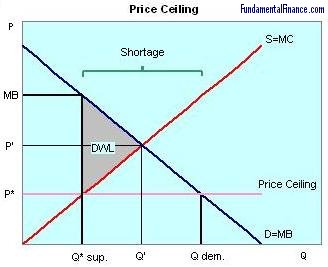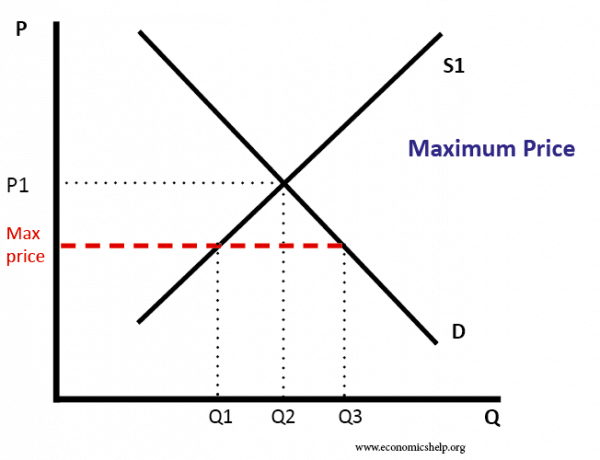When the price is above the equilibrium the quantity supplied will be greater than the quantity demanded and there will be a surplus.
Effective price ceilings and price floors.
But this is a control or limit on how low a price can be charged for any commodity.
Price ceilings prevent a price from rising above a certain level.
This section uses the demand and supply framework to analyze price ceilings.
When price floors are imposed consumer surplus decreases and producer surplus increases.
As a result many people called for price controls on bottled water to prevent the price from rising so high.
The next section discusses price floors.
A government imposes price ceilings in order to keep the price of some necessary good or service affordable.
Like price ceiling price floor is also a measure of price control imposed by the government.
They each have reasons for using them but there are large efficiency losses with both of them.
Price ceilings and price floors can be either effective or ineffective.
For example in 2005 during hurricane katrina the price of bottled water increased above 5 per gallon.
A price ceiling keeps a price from rising above a certain level the ceiling while a price floor keeps a price from falling below a certain level the floor.
Price ceiling price floor effective and ineffective.
Price floors and price ceilings are price controls examples of government intervention in the free market which changes the market equilibrium.
It is legal minimum price set by the government on particular goods and services in order to prevent producers from being paid very less price.
This is usually done to protect buyers and suppliers or manage scarce resources during difficult economic times.
Price floors and price ceilings are government imposed minimums and maximums on the price of certain goods or services.
As you learned in the lessons above any price set above the equilibrium price is an ineffective price ceiling but is an effective price floor and any price set below the equilibrium price is an ineffective price floor and an effective price ceiling.
This section uses the demand and supply framework to analyze price ceilings.
Price floors prevent a price from falling below a certain level.
Implementing a price floor.
When society or the government feels that the price of a commodity is too low policymakers impose a price floor establishing a minimum price above the market equilibrium.
Laws that government enact to regulate prices are called price controls.
When a price ceiling is set below the equilibrium price quantity demanded will exceed quantity supplied and excess demand or shortages will result.




























